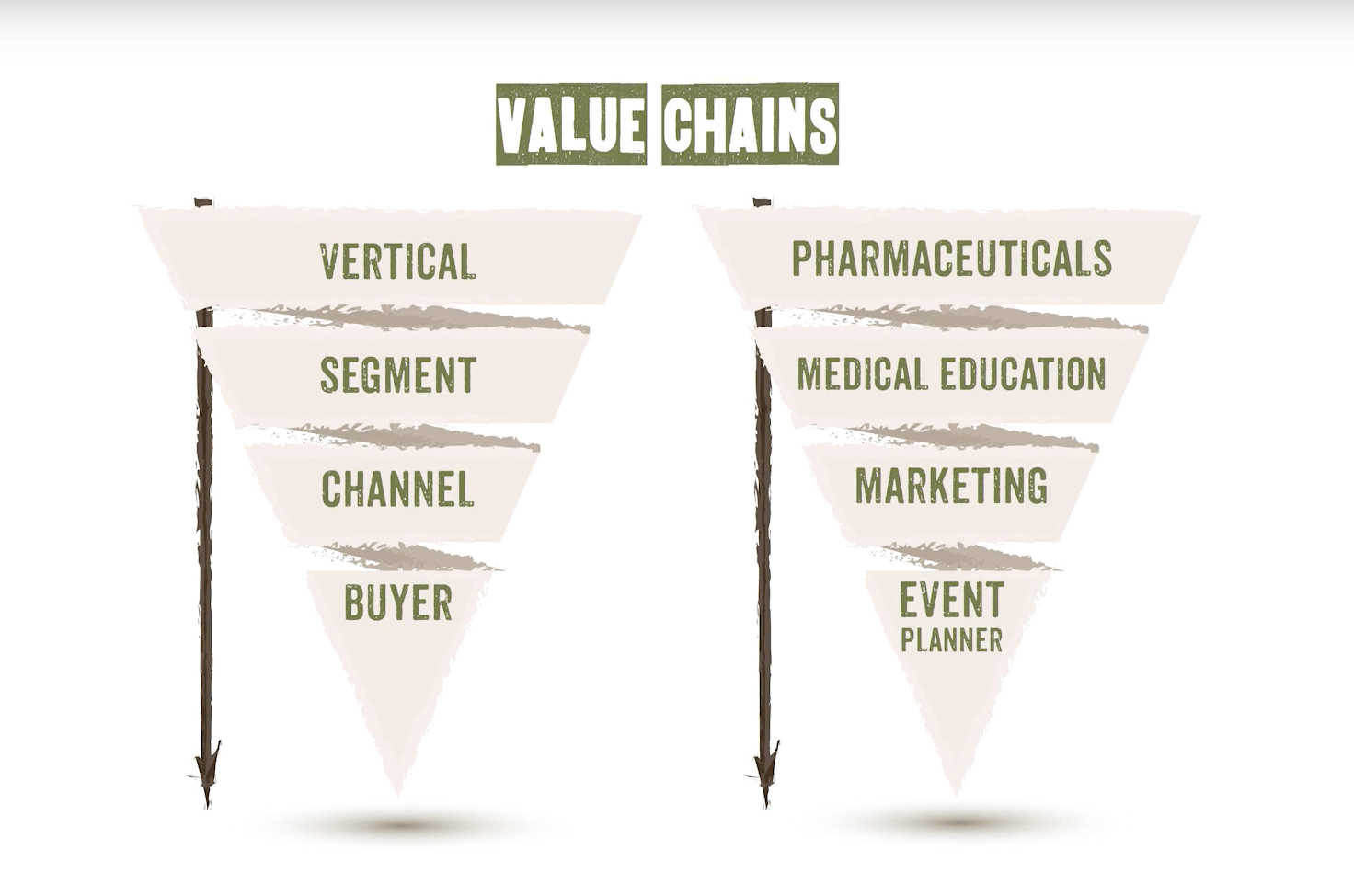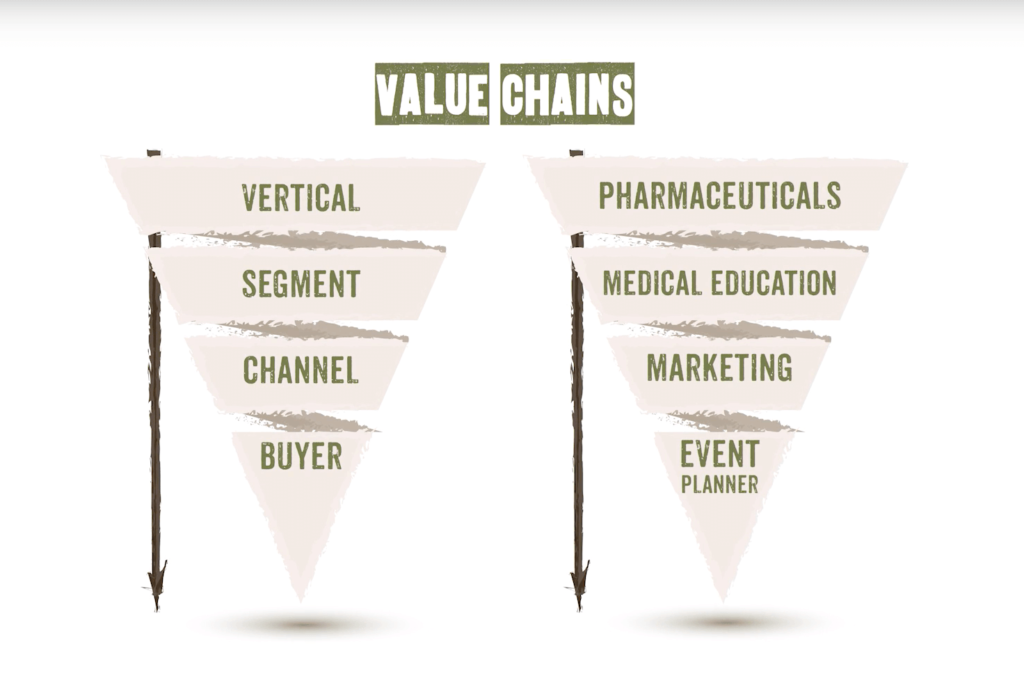
One of the very first questions I ask any business I work with is “Who are your target customers?”
Fairly basic, straightforward question, right?
Well, it may not surprise you, but the answers I usually get aren’t always accurate.
For example, many of my clients first respond, “Our best customers are pharmaceutical companies.” But those aren’t their actual customers.
When we dig a little deeper, I help them realize the pharmaceutical companies aren’t the ones writing the check. They’re actually getting paid by someone else — and that’s their real customer.
Understanding who your customers are is very important.
A customer is someone who pays you money. And who that is may not always be apparent. To find out who your real customer is, you need to look at the value chain.
What is the Value Chain?
Every person you deal with in business has value. But the type of value isn’t the same.
For each industry, there’s a value chain that contains four parts:
- Verticals
- Segments
- Channels
- Buyers
Until we understand how these interconnect and the role each person plays within that chain, we can’t focus our marketing efforts in the right direction.
To understand the value chain, we first have to understand the buyer. Once we understand who our actual buyers are, we can work our way up the value chain and start to identify the channels, segments, and verticals they connect with.
Once we learn to do that, we can unpack any vertical market to see the segments, channels, and buyers within it.
When you start a company, you begin work with the very first buyers you know. Your first business deals are with people you already know will transact with you. Dealing with buyers is natural for us — it’s something we all have experience with.
But you’ll eventually run out of buyers you know and you’ll have to find more buyers — targeted buyers.
What’s their profile? What do they look like? That’s what we need to give to our marketing department and sales team.
Who Your Buyer is NOT
Identifying your buyers may not be as simple as it sounds.
Who we think of as a buyer may actually be an influencer, recommender, or worse, a gatekeeper.
How do you tell the difference?
Who pays the invoice? Who writes the check? That’s your buyer.
Influencers affect decisions. Buyers make decisions.
It’s normal to have deep transactional conversations with someone who’s not making the final decision. Those conversations and relationships still matter.
You won’t get anywhere in business by discounting the people you’re dealing with — buyer or not. But we have to understand what type of value they offer. They can often help you get a better buyer, but they’re not your target customer.
However, once we pinpoint the true customer, we can direct our marketing in the right direction.
Remember, everyone you deal with is important, but don’t mistake who your buyer actually is.
The Value Chain Explained
Once we learn to identify our buyers, we can begin to understand the rest of the value chain.
At the top of the inverted pyramid, we have business verticals.

Every industry you can think of is a vertical. Within each vertical are segments.
In the pharmaceutical industry, medical education is a very popular segment for people in the AV rental business. These medical education events require the rental, installation, and operation of audio-visual equipment. That’s a segment within the pharmaceutical industry.
But medical education does not buy from you. It’s managed by a channel. It might be managed by a marketing channel, an education division, a trade show division, or the executive office. The channel within the medical education segment (which is within the pharmaceutical vertical) will determine who the buyer is.
Finally, we get to the buyer!
The buyer might be an event planner that works for a pharmaceutical company in the marketing department. It might be an event planner who works for a third party provider outside of the organization. If the event planner makes the decision and writes you the check, they are your buyer regardless of whether they’re internal or external to the organization.
If someone behind them is making the decision and the event planner is only making a recommendation, whoever is making the decision is the buyer — maybe it’s a committee, individual, or procurement.
When we identify who’s paying the invoice, we identify our buyer.
Developing a Strategy that Works
Ready to implement a marketing strategy that really works?
Start at the bottom of the value chain. Develop a profile of your target customers — the buyers!
No, the customer isn’t always who you think it is at first. But once you know, you can start to focus your sales and marketing efforts in the right direction.





Leave a Reply